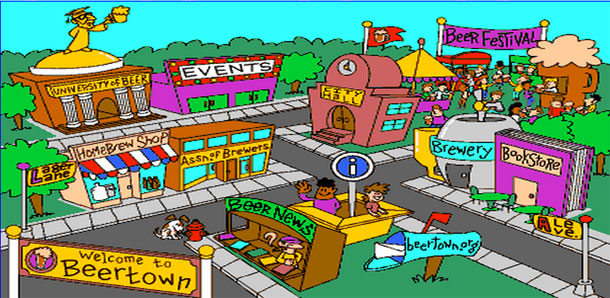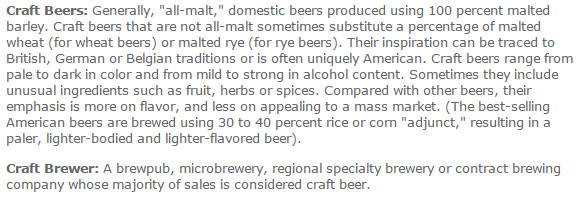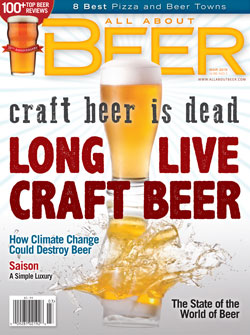MONDAY BEER LINKS, MUSING 01.19.15
1- With 600 bottles of beer on the wall, how can a staff keep up? Taste, talk and learn.
2- Why beer experts matter.
3- “Expertise is key, not the ‘experts’ – personifying a body of knowledge just limits it.”
4- Is It Even Possible To Be A Beer Expert?
As I have mentioned in the past, I save stuff to Pocket through the week, then sometime during the weekend pick what to post here, and occasionally try to add an original thought. So the top story hit my radar Tuesday, and it had me thinking about some of the things Jeff Alworth discussed in No. 2 (spotted Wednesday). The Twitter thread initiated by Alan McLeod (No. 3) quickly followed, resulting in interesting exchanges first between Alan and Lars Garshol, then Alan and Jeff (disregard me popping up along the way). Figuring I would get this post out of the way early Saturday turned out to be a mistake, because no sooner did I think I was done than Alan posted No. 4.
Because I need to clear my head for important matters like trivia tonight (Saturday, as I type), I will be brief. In the midst of making a point, Alan kindly writes, “If I want to know as much as I can know about hops, I ask Stan.” If that’s a good idea, it’s because I understand I am not an expert on hops. I am pretty good at identifying expertise, but I try not to over rate it.
Of course, now we are a long way from No. 1 and the opening paragraphs of No. 2 — helping the person sitting in front of 50 beer taps make a good choice. But consider the seemingly simple questions along with the complex. I once had a math teacher who told us, “If you can’t solve the problem, find one you can solve.” And not to be pushy, think about it the context of what Alan has to say in his conclusion, that “This essay is in no way intended to be a sword of Zorro moment, a triumphal flourish in which the topic is summed up so completely you need not think further.” (My italics.) [Via The Washington Post, All About Beer, Twitter, A Good Beer Blog]
How craft beer has set struggling pubs free from the nachos.
Here’s what Pete Brown wrote on Facebook: “Great article about how independent breweries are helping revive pubs, followed by comments from ignorant twats complaining about beards and arguing the toss about the meaning of craft beer…” And I am reminded that I am sad Don’t Read Comments hung it up. [Via The Guardian and Pete Brown]
“December, 1919.”
Oliver Gray announced two projects this week and I’m not sure which is more ridiculously ambitious, Homegrew.com or this: “Instead of following the traditional path of writing a whole manuscript, editing it, and sending it off to collect rejections from publishers, I figured I’d do what I (like to) do best, and blog the story. Or serialize it into 52 parts. One chapter a week, every Wednesday, for a year. Around a thousand words per chapter, give or take a plot point or two.” [Via Literature & Libation]
Q&A With Beer Mile World Champion James Nielsen.
Breaking Down the Winning Beer Mile Strategy.
Lots of numbers in the second post, as you’d expect from BeerGraphs, but somehow not this key consideration: “If you’re drinking four beers, right off the bat you have 48 ounces of liquid in your stomach, so you have to be able to contain that. And generally there are between two-and-a-half and three liters of carbon dioxide in each can, so you multiply that by four, and you have approximately 10 liters of carbon dioxide to contend with. If you warm up the beer, the majority of the carbon dioxide will come up to the top, so when you crack it open you get as much of the carbon dioxide out as possible. And on that last lap, you’re trying to burp out as much of that carbon dioxide as you can while you’re running. You’re just so full.” [Via RootsRated and BeerGraphs]
Lagunitas drops lawsuit against Sierra Nevada after Twitter backlash.
The year is off to a great start for any sociologist out there writing a grant to to study Craft Beer (maybe that should be all caps). First the Jim Koch dustup and now the IPA trademark showdown. As much as I loved the headline “Beer lovers torpedo Lagunitas lawsuit against Sierra Nevada” I’m not going to repeat last week’s mega-links and so refer you only to this interview with Tony Magee. Like his book, proof that he is a business genius. [Via Chicago Tribune]


